The Last GIBs of Gujarat
By Devesh Gadhvi
The Great Indian Bustard, popularly known by the short-form GIB, is a majestic but threatened Indian bird. Today less than 250 GIBs are left on the face of earth. Standing one meter tall, this bird prefers to live in the grasslands during its breeding season (during monsoon in Gujarat), and for the rest of the time of the year i.e. during winter and summer, it prefers to live in open undisturbed land and/or harvested fields of Sorghum and Millet.
They feed mainly on the insects, and hence the Great Indian Bustard is truly a ‘farmer’s friend’ and its presence can never be problematic to the farmers. Moreover, GIB also feeds on the small reptiles, berries or fruits of Zizyphus and Capparis and fallen grains in the harvested agricultural fields.
The Great Indian Bustards were once widespread in India and Pakistan. However, today they are surviving mainly in India in the states of Rajasthan, Gujarat, Maharashtra, Andhra Pradesh and Karnataka with a few sparse sightings in Pakistan. According to one pessimistic estimate, there are about 60 to 70 birds in Rajasthan, less than 30 in Gujarat and a total population of less than 30 birds surviving in rest of the states in India. The global population of the bird, albeit on the basis of scientific studies, is believed to be between 50-249 individuals.
Till 1950-60s, the Great Indian Bustards were sighted in the Saurashtra region and Kutch district of the State of Gujarat. Gradually, the habitat of this species came under pressure of agriculture and other development, which resulted in the loss of habitat for the species. In addition to this, the rampant hunting of GIB was also prevalent which resulted in a steep decline of its population. Here, it is very much essential to understand that this species lays mostly one egg per year, hence the population cannot bounce back when the extraneous conditions are favourable. All these situations have collectively led the species to the verge of extinction.
In 1960s, Salim Ali, India’s most famous ornithologist, had recommended the Great Indian Bustard to be declared as the National Bird of India, as that would have led to the common man becoming aware about the importance of this species, resulting in its conservation. Unfortunately, his dream couldn’t be completed and his fears about the population decline of this species came true with the GIB numbers dwindling down rapidly. As per a study carried out in 1969, there were about 1260 GIBs in India then, this number has declined to less than 250 birds today. The bird that was declared as ‘threatened species’ in the 1980s, has come on the verge of extinction today. Despite this, today majority of Indians are unaware about the Great Indian Bustards and many Gujarati’s too are unaware of its existence in the State of Gujarat.
We all feel proud of the existence of Asiatic Lion in Gir and Indian Wild Ass in the Little Rann of Kutch which is surely a good thing. Sadly, at the same time the presence of the Great Indian Bustard, which is our natural heritage and locally known as Ghorad in Gujarat, is vanishing from our minds.
Extinction of a species from the mindset of the society before the actual extinction of the species from wild, is the worst thing that can happen to any individual species. In Gujarat, the Great Indian Bustard is surviving in the Abdasa and to a certain extent in the Mandvi taluka of the Kutch district. The GIB has the distribution range of about 1000 sq.km of which 250 sq.km is a very crucial and sensitive habitat for the GIBs. However, our indifference to the welfare of Great Indian Bustards is shocking. Only a mere 2 sq.km of area in Kutch is protected and has been declared as “The Kutch Bustard Sanctuary”. Owing to this small size of the sanctuary, most of the GIBs in Kutch are struggling to survive outside the protected area. These areas consist of revenue lands of approx. 30 villages and few small patches owned by the Gujarat Forest Department. All these areas are prime wildlife habitats but are unfortunately termed as waste lands and are known as Kharabo or Sarkari Padtar in gujarati..
Recently in the year 2013, the Govt. of India had released a very detailed and scientific guideline for the recovery of the critically endangered GIB. As per this guideline, development of power-lines, windmills and pylons can be fatal to this species. And hence, it is recommended that none of such infrastructural development should be allowed in or around the bustard habitat. In the recent past, the mortality of GIBs has been reported due to the collision with power-lines in Maharsahtra, Rajasthan and Gujarat. During the year 2014, one adult female GIB had died in Abdasa taluka of Kutch district in Gujarat due to the collision with power-line. It is also interesting to note that various scientific research have revealed that the bustards have a poor vision and hence the probability of their collision with the power-line is much higher than the other species. Even a single death due to the anthropogenic activities, can leave a fatal impact on the entire population of a species like GIB, especially when the species is on the verge of extinction, laying mostly one egg per year and which needs human support for the long term survival.
Unfortunately, in Abdasa taluka which is the last home for the GIBs in Gujarat, a huge electric power substation is being developed by the GETCO (Gujarat Energy Transmission Corporation LTD), right in the middle of most important flying areas of the species. Major work of this development has already been initiated in the area. This substation is being developed in an area from where regular movements of the species have been observed. Currently, the pylons for the two High-Tension Power-lines of 220 kV each have been installed. Each of these lines have 13 cables at an exact height at which the GIBs fly. Hence, the mortality of GIBs due to the collision with such power-line in near future is very much certain especially since another 16 powerlines are scheduled to be installed here.

Network of power-lines and pylons installed by GETCO around the Great Indian Bustard habitat developed by the Forest Department
After putting lots of efforts, the Gujarat Forest Department have succeeded in developing a suitable and secured habitat for the GIBs in this area. Even today, good growth of grass and suitable habitat for GIB, developed by Forest Department, can be seen in this area. To provide a suitable and undisturbed breeding ground to the species, the Forest Department has also installed chain-link fencing in this area and has developed safe breeding enclosures. Fortunately, as a result of such hard work, three chicks of GIBs have survived in the year 2016. But GETCO has planned its activities in a very tactful way in the same area by which they do not have to seek ‘No Objection Certificate’ from the Forest Department.
Installation of the pylons and other developmental activities is being done by the GETCO adjacent to the forest areas, but outside its boundary. Due to such developmental method, the GIB habitats have been surrounded by the network of power-lines and pylons which will ascertain the extirpation of GIB – ‘The Pride of Kutch’.
The map shows how such developmental activities are being done around the GIB habitats, developed by the forest department, while the villages on both the sides viz. Bhachunda and Konathiya, have similar areas for such development. If this development would have been done in those areas it would have not been fatal to GIBs.
Most of the time, our society has a belief that the nature conservationist or ecologists are always against all kind of development. Hence, whenever they request the Hon. Government for any matter, they are considered as the ‘Barriers of Development’ and their request are being overlooked. While in reality, if their suggestions are sought, they will be able to suggest the mitigations and measures that need to be considered while implementing the project to leave minimum effect on the wildlife and environment of the related area. No naturalist would ever wish to make the villagers suffer and to hinder the development of any village. They just wish that where, what and how things should be implemented so that minimum disturbance is caused to the ecology.
When the large numbers of flamingos, state bird of Gujarat, died due to the collision with the power-lines in Khadir region of Kutch, the power-line was made underground which is an appreciable action taken by the Hon. Government and concerned officers. Currently, the Great Indian Bustards are facing similar threat. Does it mean that only when these power-lines take their toll and wipe out a majority of GIBs from Gujarat, the Government will wake up to the reality and take actions to save this important and iconic species?
With a request to take immediate actions in this matter which can be fatal to the GIB, TCF (The Corbett Foundation) based in the Abdasa taluka of Kutch has written a letter to the Hon. Chief Minister of Gujarat. It has also been requested that bird diverters should be installed on the power-lines that has been erected, and all the future power-lines in this area should be made underground.
This area is the last home of GIB in the Gujarat state. If these ill-planned infrastructure creation activities detrimental to the species continues, then Gujarat will lose its Great Indian Bustards forever. Future generations will never forgive us if the Great Indian Bustards are driven into extinction due to our apathy, as the information to save them is readily available.
- The Last GIBs of Gujarat - 27 April,2017

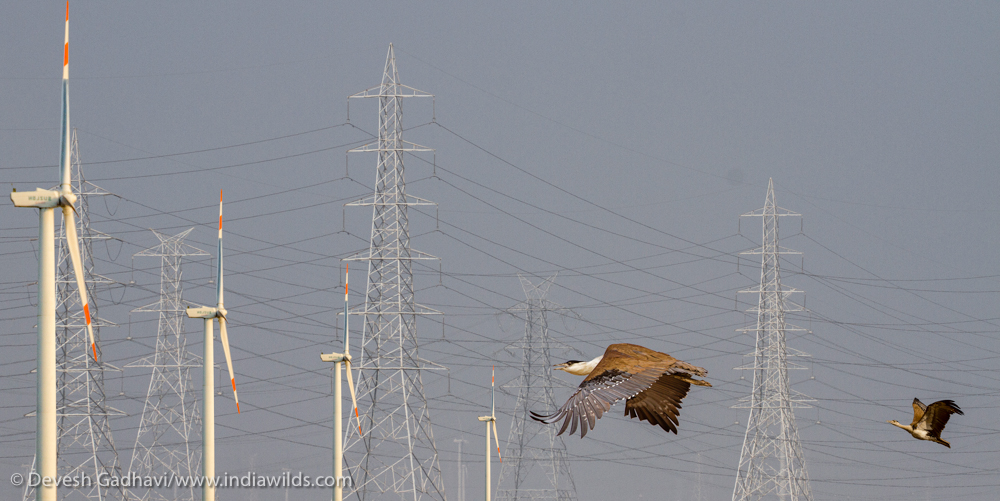

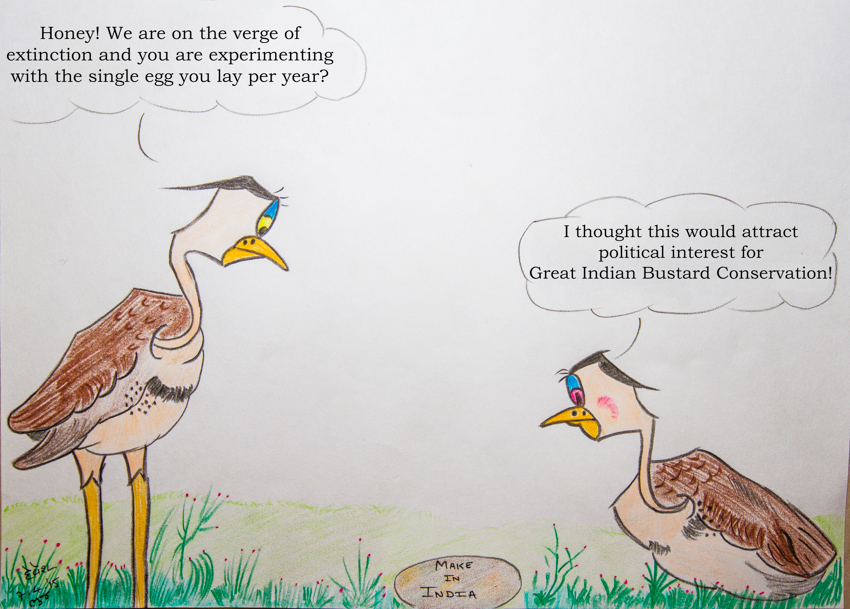
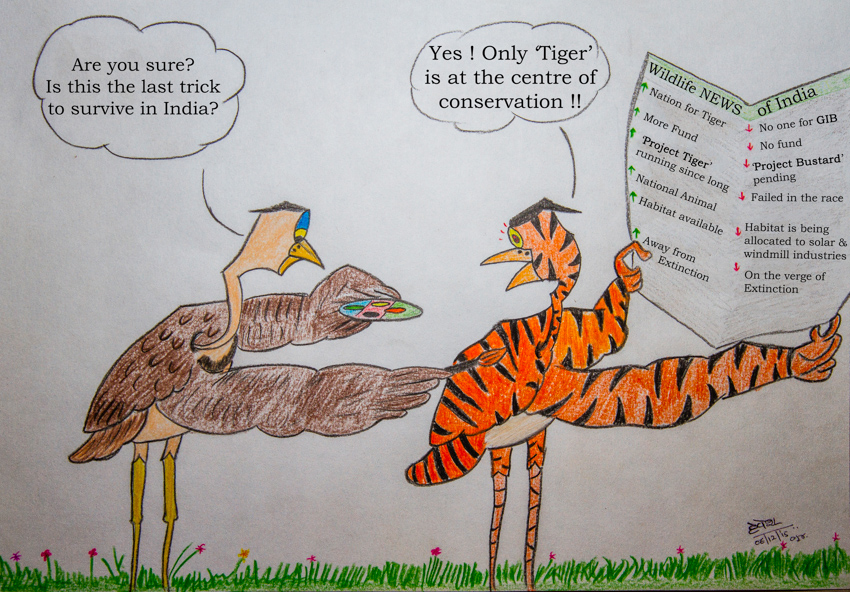
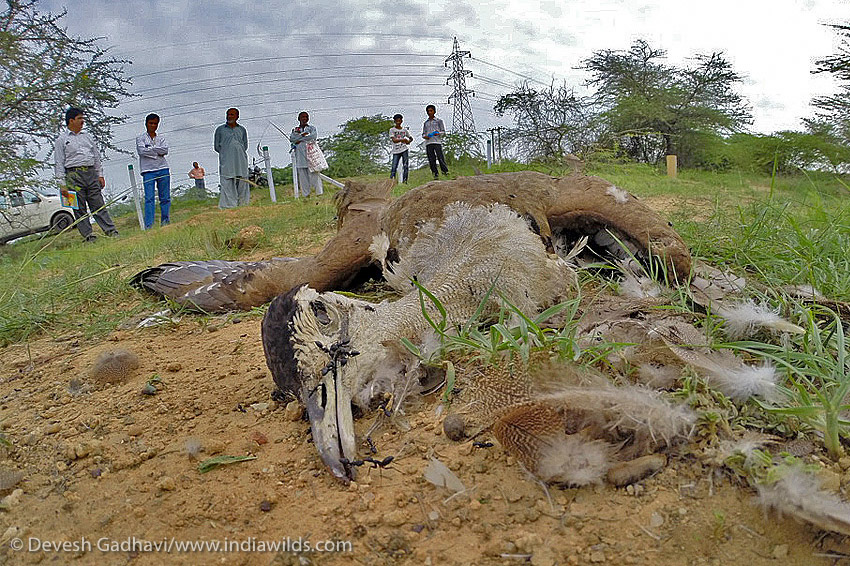


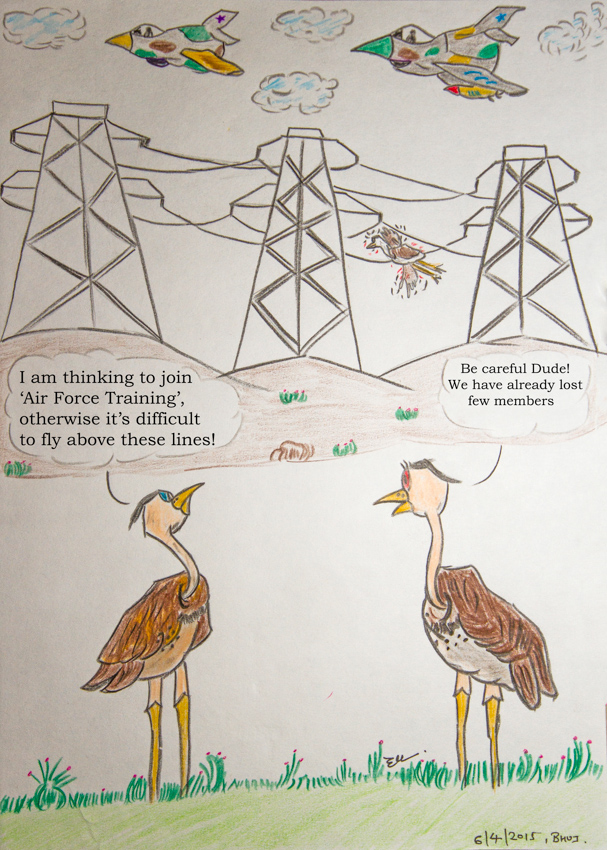












Sir …very informative article…we should start captivity breeding ..no other meausre can increase the population of GIB…and forest dept. Of Rajasthan and Gujarat can do this..with helping each other I had visited both abdasa and DNP both area are similar in geographically and ideal site for GIB breeding..Thanks